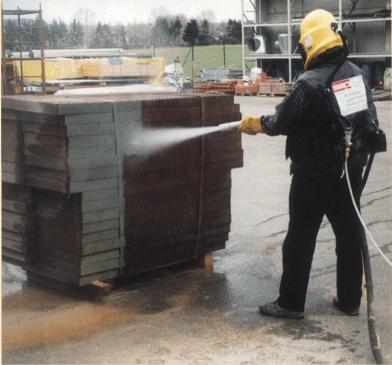
The sand blasting for rust removal takes advantages of compressed air to spray certain particle size of abrasive grains on the corrosion surface of parts.

The sand blasting for rust removal takes advantages of compressed air to spray certain particle size of abrasive grains on the corrosion surface of parts. This method not only saves time, but could make good preparation for painting, coating and electroplating. After the process of sand blasting, the surface meets the requirements of clean and certain roughness, which improved the adhesion strength between cover layer and parts.
The commonly used sand blasting rust removal method includes dry sand blasting, wet sand blasting, dust-free sand blasting and high pressure water sand blasting. Dry sand blasting is harmful to health and environment; wet method is without dust, but the water will make the surface rust again. The solution is to add 1% ~ 15% antirust agent (trisodium phosphate, sodium carbonate, sodium nitrite, etc) and emulgator or soap water to prevent rust in short time and then paint shop primer. Dust-free sand blasting puts the process of adding sands, spraying sands and sand reclamation together in a closed recycling system to avoid flying dust. While high pressure water blasting is widely applied in large scale rust removal, such as ship, oil tank, and it is essential to add passivant and soap water.
Requirements of rust removal quality
(1) With water-borne inorganic zinc-rich coating, the surface of the steel to be painted must be shot blasting or sand blasting to meet the standard of ISO8501-1 (GB8923-88) Sa2.5.
(2) Partial repair coating, steel surface must be polished to ISO8501-1 l (GB8923-88) St3 level.
2. Surface roughness requirement: the surface roughness must be controlled within 35 ~ 65um.
3. Abrasive grains
(1) In order to ensure the steel surface cleanliness and surface roughness, it is recommended to use stainless steel grains with angular or round bead shape and grain size between 0.3mm and 0.8 mm.
(2) The used abrasive grains should be clean and dry without organic pollution.
4. Compressed air: Compressed air in the process of sand blasting should be not less than 0.5 MPa.